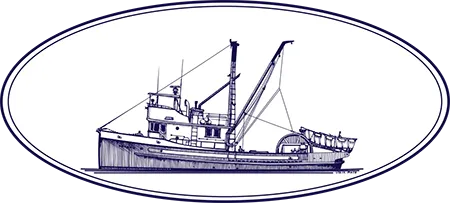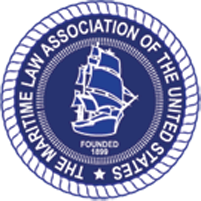When a worker has been injured, employers may try to say the worker’s injury was caused by their own negligence, which is why it is important to speak with an attorney about your legal options when seeking compensation for damages. Employers rely on several defenses to show why they are not 100% responsible for the damages and injuries that result from an incident that occurred on the job.
In order to win a claim of negligence, the seaman must establish that the employer:
- owed a duty to commit an act or refrain from committing an act;
- the employer breached this duty;
- the breach of this duty caused injury to the worker;
- the employer’s actions played a part, even the slightest, in causing the injury; and
- the worker suffered actual damages as a result of this injury.
Attorneys for Defenses to Negligence Claims in Washington, Oregon, Alaska, and California
The attorneys at Anderson Carey Williams & Neidzwski, LLP have successfully represented clients in Washington, Alaska, Oregon, and California for over a decade. Our maritime lawyers are very knowledgeable about the Jones Act and negligence claims defenses. Our attorneys work hard to get you the compensation that you deserve for your damages.
Contact Anderson Carey Williams & Neidzwski, LLP at 1-800-262-8529 today for a free evaluation of your case. Our attorneys will investigate your case fully and, if eligible, will file a claim to get you compensation for your damages.
Information Center for Negligence Claims Defenses
- Types of Negligence Claims Defenses Comparative Negligence in Maritime Law
- Comparative Negligence
- What is the Difference between Comparative and Contributive Negligence?
- Additional Resources
- Defenses to Negligence Claims Attorney in Washington, Alaska, California and Oregon
Types of Negligence Claims Defenses in Maritime Law
In standard negligence cases, the plaintiff must prove that the defendant’s negligence was the main cause of the plaintiff’s injury. Common defenses to negligence claims include a showing that the defendant did not owe a duty to the plaintiff, or that the defendant exercised reasonable care while at work.
In order to prove causation under the Jones Act, the plaintiff must only prove that the employer’s negligence played some part in the plaintiff’s injuries. Even if there was an additional cause of the injury, the employee might still be able to recover damages from their employer.
- Employer Negligence –Employers have the responsibility to provide a reasonably safe place to work for their employees. They must also use ordinary care to maintain and keep the vessel on which the seaman works in a reasonably safe condition.
- Injured Employee Negligence –An employee has the duty to do their job with reasonable care. They also have the duty to use safety precautions and follow rules set forth for them by their employers.
- Contributory Negligence –Plaintiff’s conduct fell below a certain necessary standard and this, in addition to the defendant’s negligence, caused harm to the plaintiff. If the plaintiff contributed at all to his or her injury, it acts as a total bar to damages.
- Comparative negligence –Plaintiff’s conduct fell below reasonable standards of care and this, as well as defendant’s negligence, both acted to cause injury to the plaintiff. However, plaintiff contribution to his or her injury is not a total bar to recovery under this legal concept.
- Statute of Limitations –The time period between when the injury occurred and when a complaint must be filed. Under the Jones Act, this time period is generally 3 years from when the injury/accident occurred, barring mitigating circumstances.
- Assumption of Risk –The plaintiff voluntarily consented to encounter a known danger created by the defendant’s negligence. Under an express assumption of risk, parties agree in advance that one person consents to assume the risk of the others negligence. Under an implied assumption of risk, the risk may not be explicitly stated, but it may be implied.
Comparative Negligence in Maritime Law
If you are partly responsible for your own injuries while working, you may still be able to claim comparative negligence. Under a comparative negligence claim, you would still be awarded damages, but they may be reduced based on the percentage of your responsibility for the injury.
Comparative negligence compares the plaintiff’s negligence to the defendant’s negligence. First, the percentage of fault attributable to the plaintiff and the defendant is determined, then damages are awarded based on those percentages. For example, if the plaintiff was found to be 25% at fault and the defendant 75% at fault, the plaintiff would only recover 75% of damages from the defendant.
Comparative negligence is not applicable if a seaman is injured as a result of a defendant’s violation of Coast Guard regulations. Violations of Coast Guard regulations may result in fines or imprisonment. A violation of Coast Guard regulation that causes injury creates liability “in the absence of any showing of negligence.” Kernan v. American Dredging Co., 355, U.S. 426, 431 (1958).
The three main types of comparative negligence claims used in maritime cases are:
- Pure: Plaintiff is awarded a percentage of the damages for which the defendant is responsible.
- Modified: Plaintiff is awarded damages only if their negligence is equal to or less than the defendant’s negligence. If plaintiff is attributed 51% or more of the fault, he or she will not recover.
- Slight-Gross: Plaintiff is awarded damages only if their negligence is considered slight and the defendant’s negligence is
What is the Difference between Comparative and Contributory Negligence?
Comparative negligence is considered to be the less severe than contributory negligence. Contributory negligence bars recovery for the plaintiff if they bore some responsibility for the injury, no matter how small their responsibility might have been. In comparative negligence, the plaintiff’s responsibility for the injury only matters when determining the amount of damages each party owes.
Many years ago, contributory negligence was more commonly applied, but recently courts have transitioned to using comparative negligence.
7.9 Jones Act Negligence or Unseaworthiness – Plaintiff’s Negligence – Visit the United States Courts for the Ninth Circuit, which encompasses Seattle Washington and Portland Oregon, which describe ways in which the amount of damages can be reduced because of the plaintiff’s negligence. Also, find information about the level of the plaintiff’s causation required to trigger a reduction of damages for the plaintiff’s negligence.
Comparative Negligence – Visit the website of the Legal Information Institute to see the different elements of comparative negligence and how it is applies.
Defenses to Negligence Claims Attorney in Washington, Alaska, California and Oregon
It is important to speak with an experienced attorney as soon as possible so that they can start working on your case. The attorneys at Anderson Carey Williams & Neidzwski, LLP represent clients from Washington, Oregon, California, and Alaska. Civil claims for damages can get tricky and an attorney can help you figure out the best possible way to combat negligence defenses and get the recovery you deserve. Call 1-800-262-8529 today for your free consultation.











